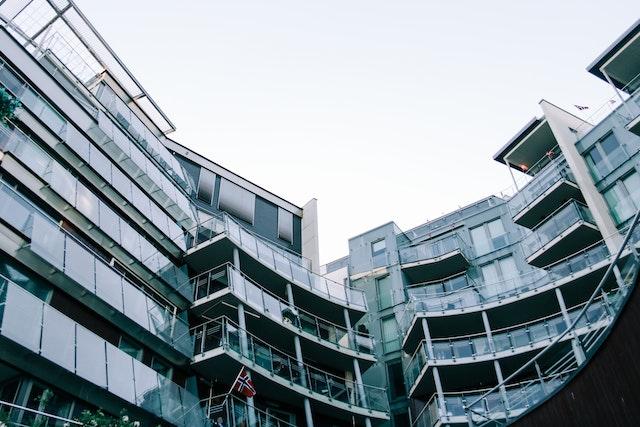Repurposing commercial properties is not just a trend; it’s an economic, environmental, and societal necessity. Harnessing innovative strategies, real estate developers can breathe new life into outdated commercial buildings, creating value and opportunity in the ever-evolving commercial real estate landscape.
Understanding the Need for Repurposing Commercial Properties
In today’s digital age, the purpose of physical commercial spaces is rapidly shifting. From the rise of e-commerce dethroning traditional retail outlets to the recent pandemic nudging corporations towards remote work, commercial properties have an increasing vacancy. Consequently, this change brings an environmental and economic opportunity: repurposing commercial spaces.
Repurposing these buildings conserves resources by minimizing the need for new construction, generating job opportunities, and revitalizing neighborhoods. Moreover, it offers an enticing prospect for potential investors, marking the emergence of a profitable commercial real estate deal.
Key Trends in Commercial Property Repurposing
Every change brings along a set of new trends. Commercial property repurposing is no exception. Old retail spaces are being transformed into multi-purpose developments, integrating commercial, residential, and entertainment sectors. Similarly, due to the rise of remote working trends, office buildings are being converted into residential or co-living spaces.
In contrast, industrial buildings and warehouses are gaining a new lease of life as data centers or creative spaces. Nevertheless, these transformations require strategic planning, vision, and execution.
Innovative Strategies
Adaptive Reuse: Preserving Heritage, Building the Future
Adaptive reuse refers to repurposing structures for purposes other than their original design. It allows developers to retain the property’s historic charm while catering to modern functionalities. Our friends at Ample Moving Jersey City recommend finding an appropriate lot you can build upon. This practice nods to the building’s history, making it a unique selling point.
Green Retrofitting: Enhancing Efficiency, Promoting Sustainability
With sustainability at the forefront, green retrofitting is another popular strategy for repurposing commercial properties. It encompasses modifying existing buildings to reduce energy consumption and promote sustainable living. As a successful real estate investor, integrating sustainable measures can add considerable value to the repurposed property.
Tech-Integration: Embracing Smart Building Innovations
In the era of digitization, technology is a game-changer. The integration of smart building technology is redefining commercial real estate. For instance, automated energy management, safety, and security systems are becoming a must-have feature. This trend aligns perfectly with getting started as a digital landlord.
Legal and Regulatory Considerations
As thrilling as the repurposing journey may seem, it comes with its challenges. Understanding zoning laws, building regulations, and other local ordinances is essential before initiating a repurposing project. Health, safety, and environmental standards must also be adhered to. By understanding these aspects, you can avoid potential legal hurdles, ensuring a smooth transition throughout the repurposing process.
Overcoming Challenges
Despite the potential benefits, commercial property repurposing can be daunting. Structural or infrastructural limitations can pose significant obstacles. However, such issues can be overcome by collaborating with architects and engineers experienced in repurposing projects.
Financing is another key challenge. Forming partnerships with investors interested in sustainable and innovative real estate developments can be beneficial. In addition, fostering community engagement can aid in successfully navigating these obstacles, as residents often provide invaluable insights.
Connection to Moving
Interestingly, repurposing commercial properties also plays a significant role in urban and suburban movements. As office buildings transform into residential spaces, it’s not uncommon for people to move into these newly available homes. This trend is giving rise to unique, vibrant communities, offering a mix of residential and commercial amenities within proximity.
Future of Commercial Property Repurposing
Looking ahead, the potential of repurposed commercial properties seems bright in a post-pandemic world. As societal needs continue to evolve, so will the strategies for repurposing commercial spaces. In the coming years, we can expect to see more innovations and trends arising in this sphere.
The Role of Collaboration
In commercial property repurposing, collaboration between various stakeholders plays a crucial role. That involves a dynamic interplay between property owners, urban planners, architects, engineers, and local communities. This collective approach ensures that the repurposed buildings align with broader community needs while enhancing architectural and environmental value. By fostering an inclusive decision-making process, we can turn vacant or underutilized spaces into thriving hubs of activity, creating win-win situations for all involved.
The Intersection of Art and Repurposing Commercial Properties
An often overlooked yet exciting aspect of commercial property repurposing is integrating art and culture. Artists and cultural institutions increasingly find homes in repurposed industrial buildings, warehouses, and office spaces. These buildings offer the flexibility and space necessary for creative endeavors. From art galleries in former factories to concert venues in old warehouses, the fusion of art and architecture in these repurposed spaces adds a unique cultural vibrancy to urban environments. This phenomenon offers a glimpse into the transformative power of art and its role in shaping the future of commercial properties.
The Impact on Local Economies
Repurposing commercial properties can significantly impact local economies. It stimulates job creation during the construction and post-development phases, where new businesses can flourish. Additionally, it boosts local property values, contributes to the tax base, and can even encourage tourism. However, its impact extends beyond mere economics. Repurposing projects can spark neighborhood revitalization, triggering a domino effect of improvements in the area. By infusing life back into underutilized properties, we can stimulate economic growth while enriching the fabric of our communities.
Conclusion
In summary, repurposing commercial properties holds significant potential in addressing the challenges and changes in our modern world. By adapting to new norms and harnessing innovative strategies, we can make the most of these opportunities, fueling economic growth, environmental sustainability, and societal progression. As we journey forward, the transformation of these spaces will continue to shape the landscape of commercial real estate in ways we can only imagine.
https://www.pexels.com/photo/modern-geometric-glass-building-with-balconies-4178801/



